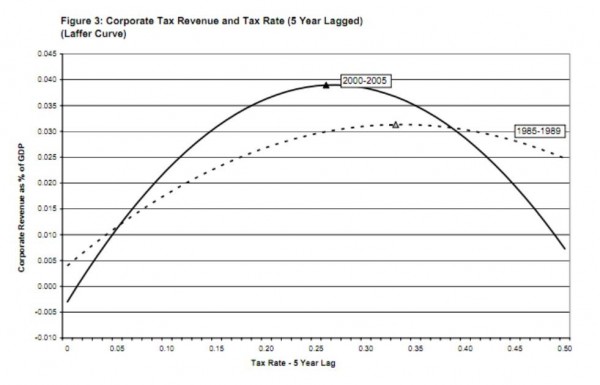The big-government advocates at the Center for American Progress recently released a series of charts designed to prove America is a low-tax nation. I wish this was the case.
The United States does have a lower overall tax burden than Europe, which is shown in one of the CAP charts, but that doesn’t exactly demonstrate that taxes are low in America. Unless, of course, you think weighing less than an offensive lineman in the NFL is proof of being skinny.
But the one chart that jumped out at me was the one showing that the United States collects less corporate tax revenue than other developed nations. The CAP document states, with obvious disapproval, that “Corporate income tax revenue in the United States is about 25 percent below the OECD average.”
The obvious implication, at least for the uninformed reader, is that the United States should increase the corporate tax burden.
But here’s some information that CAP didn’t bother to include in the study. The U.S. corporate tax rate is more than 39 percent and the average corporate tax rate in Europe is less than 25 percent.
So let’s ponder these interesting facts. CAP is right that the U.S. collects less tax revenue from corporations, but even they would be forced to admit (though they omit the info from their report) that the U.S. corporate tax rate is much higher. Let’s see…higher tax rate-lower revenue…lower tax rate-higher revenue…this seems vaguely familiar.
Could this possibly be an example of that “crazy” concept of (gasp!) a Laffer Curve? To be sure, it is only in rare cases, when tax rates get very high, that researchers find that high tax rates lose revenue. In most cases, the Laffer Curve simply implies that higher tax rates won’t raise as much money as politicians want.
But have our friends at CAP inadvertently identified one of those cases where a tax cut (i.e., a lower corporate tax rate) would “pay for itself”?
There certainly is strong evidence for this proposition. In a 2007 study, Alex Brill and Kevin Hassett of the American Enterprise Institute found that the revenue-maximizing corporate tax rate is about 25 percent.
 Somehow, I suspect this wasn’t their intention, but I want to thank the statists at CAP for reminding us about the self-destructive impact of high tax rates. For those who want to learn more about the Laffer Curve, click this link.
Somehow, I suspect this wasn’t their intention, but I want to thank the statists at CAP for reminding us about the self-destructive impact of high tax rates. For those who want to learn more about the Laffer Curve, click this link.

